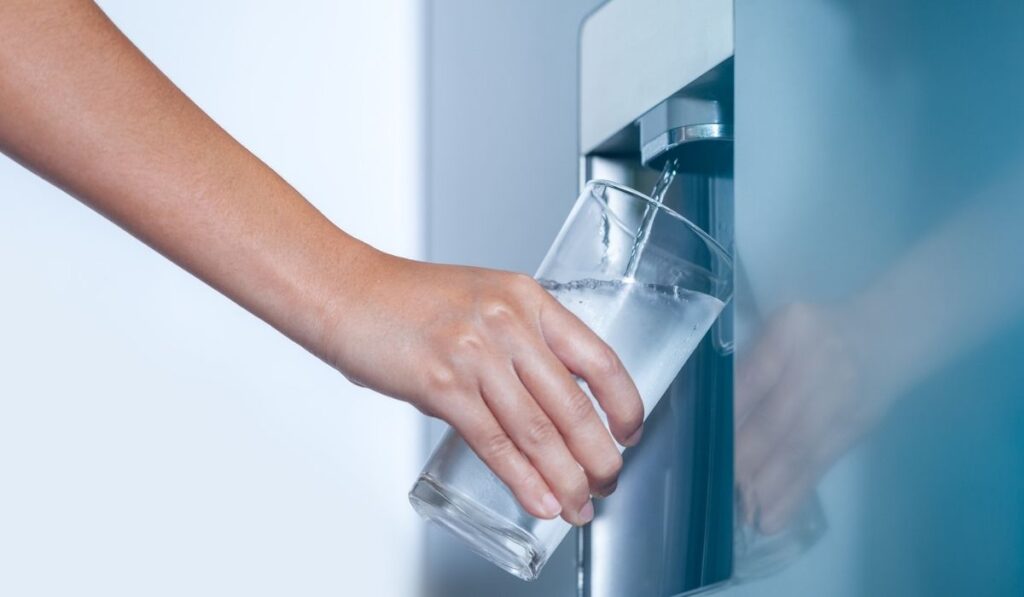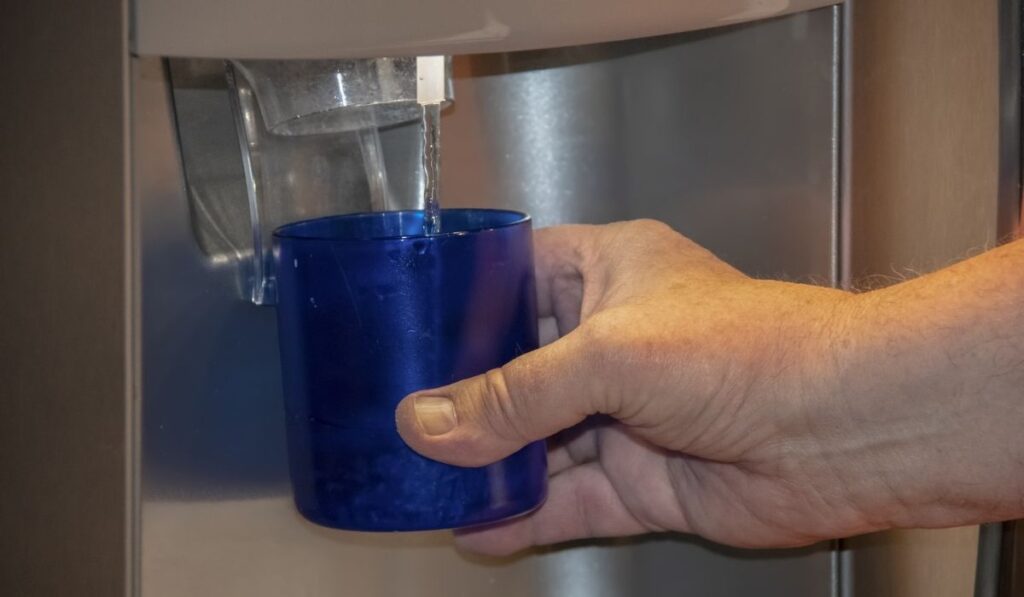It’s hard to beat the convenience of water dispensers – instead of filling up water bottles or reaching your refrigerator every time you need a drink, you just turn a knob, and out comes the water. Given the popularity, many people are now opting for refrigerators with built-in water dispensers, but what if your refrigerator doesn’t have one? Can you install a water dispenser in a refrigerator?
Adjustable water dispensers can be attached to refrigerators with magnetic strips. These dispensers are fed through the refrigerator’s water line and dispense a continuous flow of fresh filtered water. Some units like the Everydrop water dispenser also supply filtered water to the icebox.
Water dispensers save you so much time and effort – you don’t have to buy water bottles, carry them around, and store them in your fridge. Not to mention all of the plastic it saves. Plus, if you have a young family, a dispenser can be a real lifesaver to keep them hydrated. So it’s definitely worth an upgrade. Let’s take a look at how you can install one – some plumbing is involved, so be ready for a small project.
Is it Possible to Add a Water Dispenser to a Refrigerator?

Yes, it is possible to add a water dispenser to a refrigerator. However, you’ll need a water line running to your refrigerator to do so. If your refrigerator is already fitted with a valve for the ice maker, you can adjust that line to supply water to your new dispenser.
If not, you’ll need to install and run a water line from a nearby water source in your home to the refrigerator. Once you have the water source in place, choose a good adjustable water dispenser to fit your needs. Follow the manufacturer’s instructions closely to ensure proper function and avoid any leaks.
How to Install a Water Line to the Refrigerator
No problem if you don’t have a water line attached to the refrigerator – it’s an easy fix. You can fit a water line following these instructions.
Equipment you will need:
- Water tubing (1/4 inch)
- Add-A-Tee adapter (on Amazon)
- A pair of pliers
- A wrench
- A bucket
Steps to Install a Water Line to the Refrigerator
- First, locate the nearest cold water source for your dispenser. Usually, the kitchen sink faucet is a good spot, but if you have any other shut off valve in the line nearby, that will work too. Measure the distance from the faucet to your refrigerator, and make sure you follow the exact route the tubing will take. Keep a few inches of slack in the final cut just in case you need to make any adjustments.
- Turn off the main water supply to your house – you will find its valve near the water meter. Next, close the shutoff valve of the line you’re using and open any tabs attached to it to drain the water out of the line.
- Next, you have to disconnect the valve and the water tube going into the faucet. Use the wrench to loosen the nut on the valve – it’s usually a good idea to grip the valve with pliers and twist the nut off that way. Once the nut is off, remove the tube by gently pulling on it. Place the bucket under it to catch any water.
- Thread the Tee adapter in place of the old tubing and tighten it with the pliers. The adapter will create a 3-way junction to supply water to both the kitchen faucet and refrigerator line.
- Reconnect the faucet supply line to the larger 1/3 inch opening of the Tee adapter, and then slip the new supply tubes for the refrigerator over 1/4 inch opening. Use a wrench to tighten the fittings, but don’t overdo it. You might also need fitting clamps if the tubes aren’t held securely in place.
- Run the water line to the back of the refrigerator and clip it in place every few feet. Locate the water inlet on the back of the refrigerator and attach the tubing using the provided compression nut.
- Turn on the main water supply and the shutoff valve to the faucet and check for any leaks. If everything is good, your water line is now in place and ready to use.
How to Install a Water Dispenser to the Refrigerator
Now that the water line is in place, installing the dispenser is a breeze. Choose an adjustable dispenser that can attach to your refrigerator. Everydrop Water Dispenser (on Amazon) is a great option. It’s a one-of-a-kind water dispenser with amazing filters, and its magnetic strips directly attach to your refrigerator’s metallic body.
Installation is a breeze, and no tools are required. Everydrop filter comes with two attachments, one connection to intake water from the house’s water line and the other to supply filtered water to your refrigerator. So, you get filtered ice and water all in one.
To install, remove the protective covers over the magnets and attach the dispenser to the refrigerator, preferably on the side (the side is recommended because since the front doors are opened and closed repeatedly the magnets may eventually fall off).
Wherever you install it, make sure the dispenser is at least 6 inches from the wall in order to pour the water easily. Next, run its supply tubes to the back of the refrigerator and secure them with line guards provided with it. Next, close the shutoff valve on the waterline, disconnect the water line from the refrigerator’s inlet, and drain the water into a bucket.
Connect the Everydrop dispenser’s refrigerator line to the refrigerator inlet and house line to water supply tubes. Make sure you use suitable fittings and clamps to keep the tubes in place. After that the installation is complete, so turn on the main water supply and check for any leaks.
If everything is good, your dispenser is now ready to use. Flush the system with at least half a gallon of water before using it for drinking.
How Much Does it Cost to Install a Magnetic Water Dispenser?

If your refrigerator isn’t attached with a water line already, you’ll need to purchase the tubing, fitting valve, tee adapter, clamps, and any additional tools required. These supplies will cost you around $100. Then the dispenser usually costs about $75-$100, depending on the brand.
The filter has to be replaced every few months and will cost you around $15-$20. So, on average, the whole upgrade can be completed for about $200 if you do it yourself. If you hire a professional, the service fee could be around $100.
